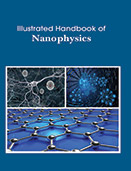Nanotechnology

Modern physical methods whose fundamental are developed in physics laboratories have become critically important in nanoscience. Nanophysics brings together multiple disciplines, using theoretical and experimental methods to determine the physical properties of materials in the nanoscale size range. Interesting properties include the structural, electronic, optical, and thermal behavior of nanomaterials; electrical and thermal conductivity; the forces between nanoscale objects; and the transition between classical and quantum behavior. Nanophysics has now become an independent branch of physics, simultaneously expanding into many new areas and playing a vital role in fields that were once the domain of engineering, chemical, or life sciences.
Illustrated Handbook of Nanophysics focuses on the synthesis, properties and applications of nanostructures and nanomaterials. Many benefits of nanotechnology depend on the fact that it is possible to tailor the structures of materials at extremely small scales to achieve specific properties, thus greatly extending the materials science toolkit. Using nanotechnology, materials can effectively be made stronger, lighter, more durable, more reactive, more sieve-like, or better electrical conductors, among many other traits. Various applications of nanoscale science to the field of medicine have resulted in the ongoing development of the subfield of nanomedicine. Nowadays nanomaterials are often applied in many industrial fields including electronics, optics, textile and many others till to biomedicine. The use of nanoparticles (NPs) in medicine has expanded recently, especially in diagnostic.
This Illustrated Handbook of Nanophysics provides an overview of the major categories of nanoparticles, including amorphous, magnetic, ferroelectric, and zinc oxide nanoparticles; helium nanodroplets; and silicon, tetrapod-shaped semiconductor, magnetic ion-doped materials. Well-illustrated, including explanatory diagrams to assist in the understanding of scientific principles, this is a self-contained text for undergraduate engineering or science students looking for a concise, easy-to-read language text.